12 meeting agenda templates you can download

Weeks with this kind of schedule can feel kind of long:
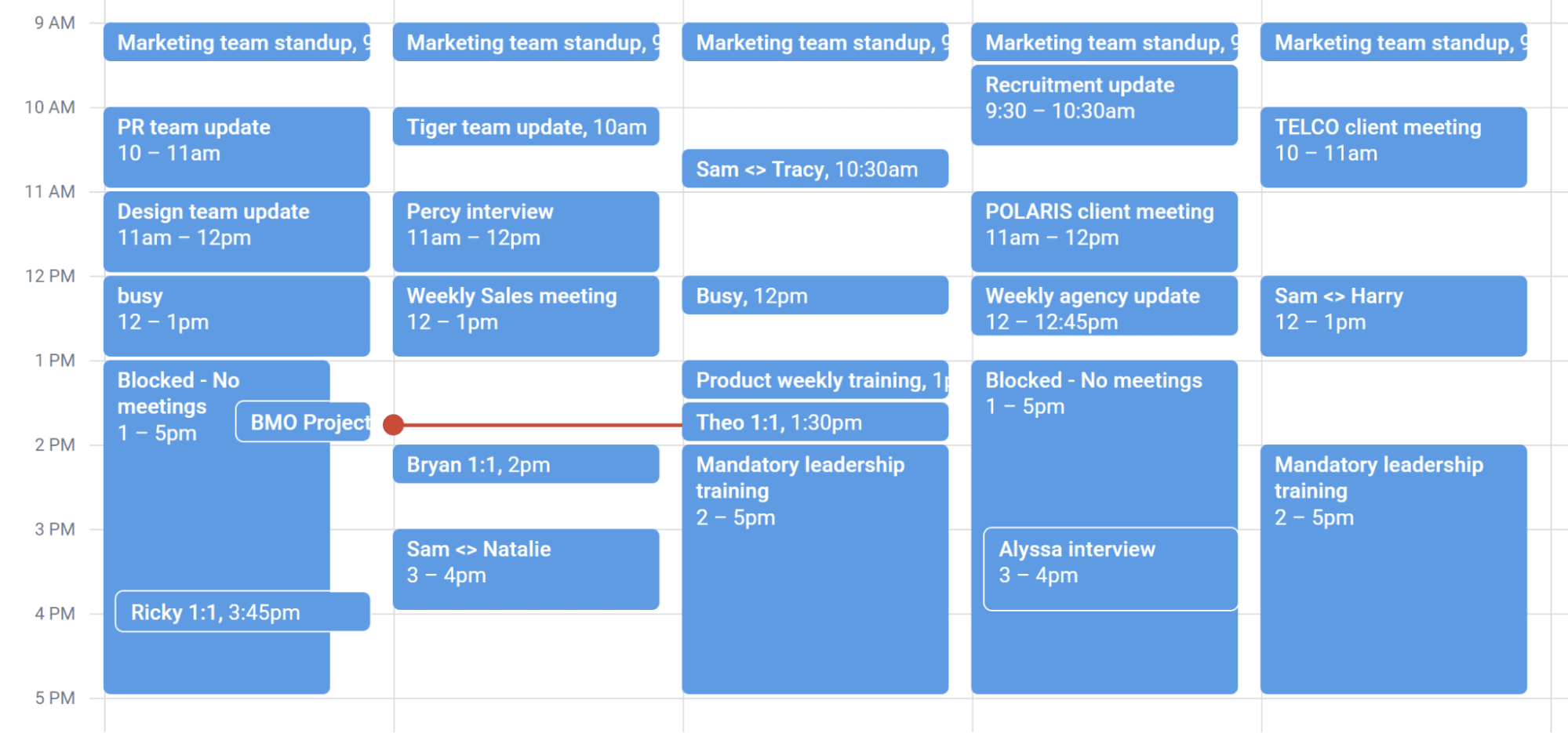
But you know what makes it feel even longer? Attending meetings that don’t have an agenda.
Being in a meeting without an agenda is like walking a trail without a map. You have no idea where the meeting will lead—or even when it’s supposed to end. The conversation topics twist and turn and, even if you do find some of it interesting, you’ll eventually question why you’re even there in the first place.
I’ve attended and scheduled hundreds of meetings: internal and external. I’ve scheduled live and online events, client meetings, team standups, 1:1 meetings, and a whole bunch more. And throughout them all there is one simple truth:
Meetings are better with agendas.
In this post, we’ll discuss the basics of a meeting agenda, why they’re so vital to modern work, and how to up your game when it comes to making and using agendas. We’ll even throw in a dozen meeting agenda templates for good measure (trust me, they’re very useful).
What is a meeting agenda?
A meeting agenda is a list of topics that are going to be discussed in that session.
Meeting agendas can be presented and used in different ways:
Attached to a meeting invite (usually sent via email or through an app like Google Calendar or Microsoft Outlook)
Printed and distributed like a memo
Powerpoint presentation slide displayed at the start of a session
Why is a meeting agenda important?
You want to know why meeting agendas are important? Let me put it like this: I wish I could automatically decline business meetings that don’t have an agenda.
Apart from the obvious reason of “it tells you what the meeting is going to be about,” meeting agendas are important in a few ways:
Agendas indicate value
I sometimes get thrown into meetings without a clear agenda because someone thinks my team needs to be made aware of certain updates. I’m grateful at being included, but at that point I don’t know if I’m going to be getting or giving any value.
If I receive an agenda prior to the meeting, I would be able to tell:
How valuable the meeting is. Face it, not all meetings are created equal. There’s a reason “could’ve been an email” is such a popular phrase in the business world—because it’s true. There are far too many wasteful and irrelevant meetings polluting the office, and an agenda will help identify a frivolous meeting right away.
How much value I can provide. The meeting might be important, but how much value would I be able to bring to it? Is there anything I can add to the discussion that nobody else can? Can I bring a unique perspective to the meeting? Do I have key information that others would need to know?
If none of the above is true, then I may be better off turning the meeting down.
Agendas help determine the attendee list
As I said before: productive meetings are all about value. Generally speaking, you only want to invite people who will either provide value to the discussion, or get value from the discussion—and no one else.
Despite this rule, however, I keep getting invites to “FYI” meetings that I could’ve avoided had I known what was being discussed. Instead, all I see is a vague meeting description and the guest list. I can’t do much with that—I can only err on the side of caution and attend anyway, on the off chance that it turns out to be important.
But in addition to excluding myself and others from the meeting, agendas also help identify who to include. If we’re having a marketing meeting about a new product launch, then it may be wise to extend an invitation to one of the engineers or product marketers. They could provide key information that others can’t.
Agendas help people prepare
Now that we know who specifically is attending the meeting, the agenda can also help give everyone an idea of what they need to prep. If, for example, one of the meeting topics is “review sales targets for Q3,” then the person responsible for that side of the business can pull numbers to present.
This can even help people who aren’t actually leading a discussion. Knowing the purpose of the meeting in advance can encourage people to research the topic in more detail so that they can contribute meaningfully to the discussion. Like if HR is presenting their hiring plans for the year, managers can look into their team’s workload prior to the meeting.
Agendas keep meetings on track
An agenda will help keep people honest to the goals of the meeting. Everyone’s clear about the direction of the discussion, and everyone can help keep the conversation relevant. This way, you’re not wasting people’s time.
If any discussion tangents go on for too long, you can always save it for the next meeting where that is the sole topic.
You have the option of adding “review meeting minutes” to the agenda, in case there are any leftover discussions that you want to close out.
Dialpad Ai Meetings has a real-time transcription feature that makes it easier to take meeting notes. This can help you keep track of open items that you can incorporate into the next meeting agenda.
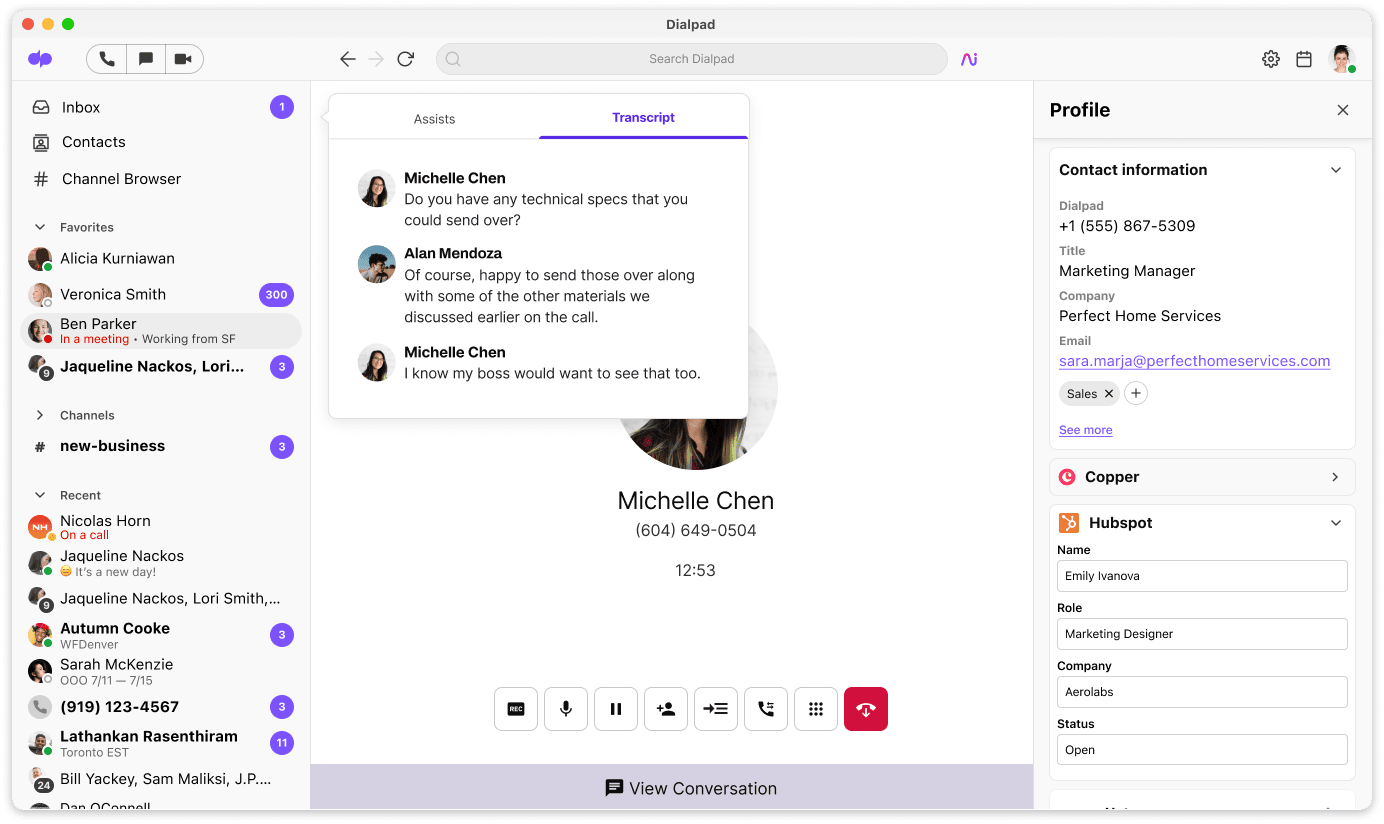
12 free meeting agenda templates
Many meeting notes templates you'll find online look like they belong in the 80's—printed out on paper and distributed via office messenger (which isn’t ideal for a digital era). On the other hand, you have “free” meeting templates from software vendors that only work in-app. Great for their users, not so much for you.
In this post, you’ll get effective meeting agenda templates that you can use in your calendar invites and in your Powerpoint presentations. Below you will find the agenda format for calendar meeting invites. You can download the Powerpoint meeting agenda templates here.
On to the templates:
1. Standard business meeting agenda
This is a basic agenda that is very flexible and can be used for many different kinds of meetings.
Date: TBD
Time: TBD
Location/Link: TBD
Attendees:
Topic 1: Name of topic
- Subtopic 1
Discussion point 1
Discussion point 2
Topic 2: Name of topic
Discussion point 1
Discussion point 2
2. Timed business meeting agenda
Some meeting agendas include times to ensure that discussions adhere to a schedule.
Date: TBD
Time: TBD
Location/Link: TBD
Attendees:
10:00 AM: Meeting room opens
10:05 AM: Topic 1: Name of topic
10:20 AM: Topic 2: Name of topic
Discussion point 1
Discussion point 2
10:45 AM: Topic 3: Name of topic
11:00 AM: Meeting ends
3. Customer QBR meeting agenda
This meeting agenda is for when you or one of your customer success reps meets with a customer to do a retrospective on their account, and to find ways of addressing any concerns the customer may have so that they will have a higher chance of renewing.
Date: TBD
Time: TBD
Location/Link: TBD
Attendees:
Topic 1: Account review
Metrics and KPIs
Notable cases
Topic 2: Needs assessment
What’s working?
What’s not?
Topic 3: Action items
Action items for both sides
4. Board meeting agenda
This board meeting agenda template is for when you are running a meeting for a board of directors. Generally, board members discuss issues critical to company operations and make decisions on how to move forward. Board meetings tend to be formal and more structured than typical team meetings.
Date: TBD
Time: TBD
Location/Link: TBD
Attendees:
Topic 1: Recent highlights
Announcements
Notes from previous meeting
Project updates
Challenges
Topic 2: Review finances
Budget vs actual
Expenditure plan
Topic 3: Strategy discussion
Review goals
Metrics
Roadmap
Topic 4: Next steps
Action items
5. Weekly team meeting agenda
Weekly meetings should be structured in such a way that each member of the entire team will have the chance to give their own updates.
Date: TBD
Time: TBD
Location/Link: TBD
Attendees:
Topic 1: Important team updates
Topic 2: Team member 1
Project status updates
Priorities
Roadblocks
Shoutouts
Topic 3: Team member 2
Project status updates
Priorities
Roadblocks
Shoutouts
Topic 4: Team member 3
Project status updates
Priorities
Roadblocks
Shoutouts
6. One-on-one meeting agenda
Even meetings with only two people can still benefit from having an agenda—especially if you’re discussing serious topics like performance targets and growth goals.
Date: TBD
Time: TBD
Location/Link: TBD
Attendees:
Topic 1: Project/task updates
Update 1
Update 2
Topic 2: Goals review and discussion
Goal 1
Goal 2
Topic 3: Career growth
Topic 4: What do you need?
7. Town hall / all-hands meeting agenda
Company town halls or all-hands meetings are big, complex events that require careful planning and lots of micro-management to ensure that things run smoothly. For these staff meetings, it’s best to have detailed agendas given far in advance to help stakeholders prepare.
Date: TBD
Time: TBD
Location/Link: TBD
Attendees:
1:00 PM: Meeting begins
1:05 PM: Company updates
1:20 PM: Department updates (Split into smaller agenda items if necessary)
Sales
Marketing
Product development
HR
1:45 PM: Q&A
2:00 PM: Meeting ends
8. Daily standup meeting agenda
Daily standup meetings are short yet jam-packed sessions that first began with Agile development teams, but have since become popular in business circles. Consider it a daily check-in instead of a formal meeting. In it, team members take turns answering a list of pre-determined questions in a round-robin fashion.
Date: TBD
Time: TBD
Location/Link: TBD
Attendees:
Topic 1: What did I accomplish yesterday?
Topic 2: What will I do today?
Topic 3: What is impeding my progress?
9. Sales meeting agenda
Sales team meetings usually cover updates on active accounts, sales process updates or changes, and shoutouts to those who contributed to successful deals.
Date: TBD
Time: TBD
Location/Link: TBD
Attendees:
Topic 1: Important team updates
Topic 2: Metrics review
Qualified opportunities
MRR
Topic 3: Pipeline updates
Deals in motion
Opportunities won
Opportunities lost
Topic 4: Roadblocks
Topic 5: Shoutouts
10. Marketing team meeting agenda
Topics for this marketing team meeting agenda template can vary based on the specific sub-specialty of marketing your team handles. This template will be for a lean team that wears many hats.
Date: TBD
Time: TBD
Location/Link: TBD
Attendees:
Topic 1: Important team updates
Topic 2: Content marketing
- Metrics
Traffic
Downloads
Project updates
Topic 3: SEO
- Metrics
Search engine rankings
Backlinks
Project updates
Topic 4: Demand generation
- Metrics
Conversions
MQLs
SQLs
Project updates
Topic 5: Roadblocks
11. Brainstorming meeting agenda
A brainstorming session is useful for generating new and creative ideas for tackling a problem, but only if it’s done properly. An unstructured session can become too chaotic and result in only a few loud voices being heard, instead of contributions from all participants.
Date: TBD
Time: TBD
Location/Link: TBD
Attendees:
Topic 1: Session objective
Topic 2: Brainstorming rules
All ideas are okay
Focus on the problem, not the solution
Topic 3: Prompts
Prompt 1
Prompt 2
Topic 4: Suggestion time!
Topic 5: Idea voting
Topic 6: Action items / follow-up
12. Project kickoff meeting agenda
This is a planning meeting done at the onset of a project in order to create and finalize a project management workflow. This meeting template can be adapted to sprint planning or to develop a more formal waterfall-style project plan.
Date: TBD
Time: TBD
Location/Link: TBD
Attendees:
Topic 1: Project background/rationale
Topic 2: Project scope
Topic 3: Project timeline
Topic 4: Resources
Manpower
Budget
Technical resources
Topic 5: Project roles
Topic 6: Additional considerations
4 meeting agenda best practices
Over hosting and attending many meetings over my career, I’ve built up a long list of meeting agenda best practices that I hope will help you make yours more effective:
1. Send the agenda with lots of lead time
One of my biggest pet peeves is sending the agenda right before the meeting. Such timing doesn’t allow you to prepare properly for the meeting; nor does it give enough time to include anyone on your team who may need to attend.
My own rule of thumb is to send meeting agendas at least 48 hours in advance. That should give plenty of time for people to read the agenda and prep their talking points and share any docs.
If you’re hosting the meeting virtually, don’t forget to include a link to the meeting room (it sounds basic, but you’d be surprised how often that happens).
Dialpad’s Google Calendar integration helps make that process easier. You can add the Dialpad virtual conference room info to the calendar natively (just pick Dialpad from the dropdown menu), and attendees will be able to join the meeting directly from the calendar invite no matter what device they’re on:
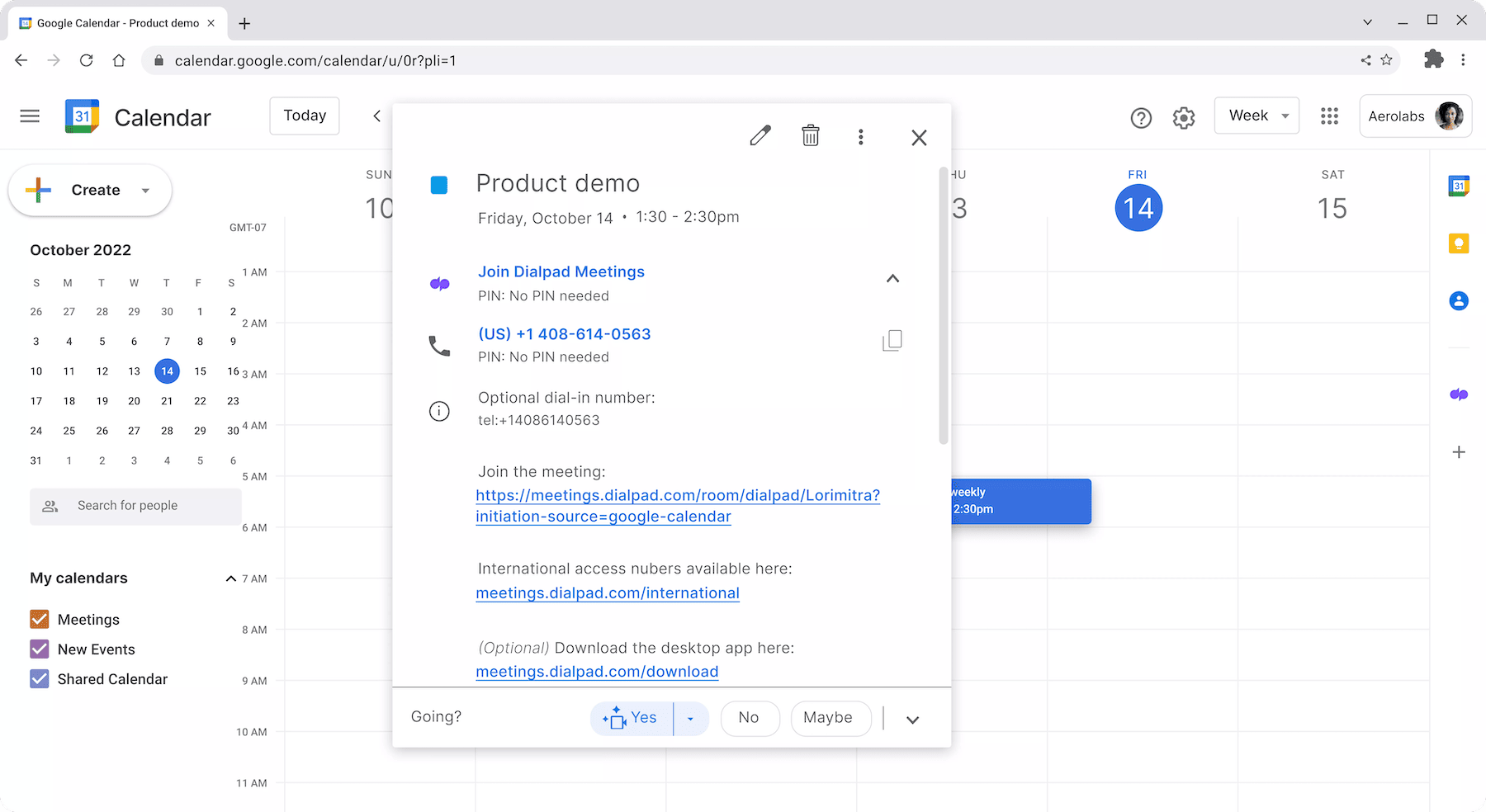
2. Don’t linger on an agenda item
The agenda is there to keep the meeting on point. As I said before, any discussions that run long should be spun into an entirely different session.
That’s why I’m a big fan of agendas with time stamps. Time stamps let you know when the time for the current discussion is up and when the facilitator should move things to the next agenda item.
Dialpad Ai Meetings has a handy meeting clock that helps remind participants of the time. It’s easy to see and even changes color based on how much time is left—or how much you’ve gone over.
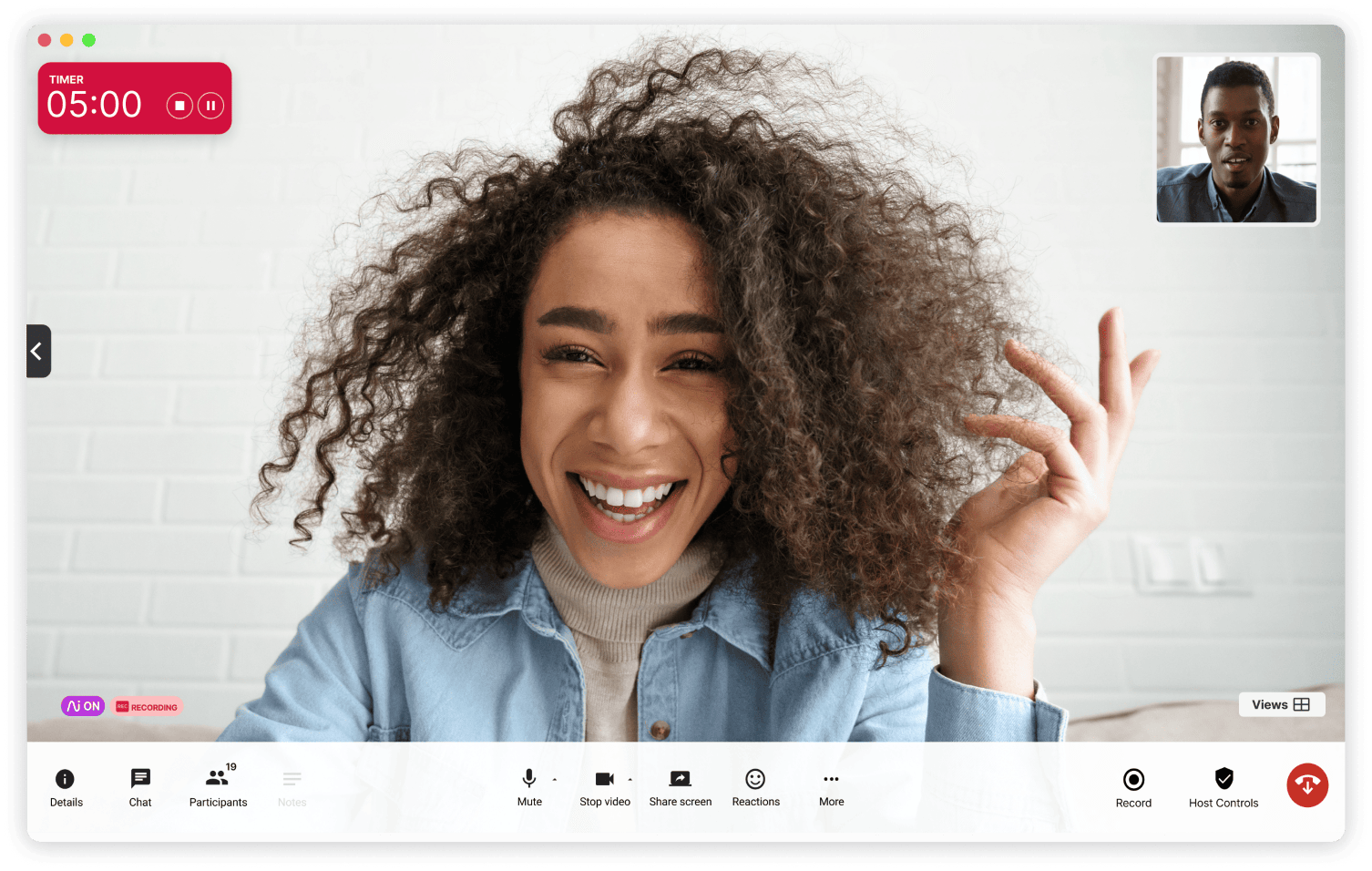
3. Don’t try to boil the ocean in one meeting
If you want to avoid running long, don’t pack your meeting agenda with every discussion point under the sun.
Your (and everyone else’s) time is valuable, and so keep discussion points to the ones that would benefit best from a group discussion and is the most urgent/important.
It might also help to set an overall objective or outcome for the meeting as a “theme,” and then sticking to that theme when putting together the agenda.
Side conversations will inevitably happen, and that’s okay as long as they don’t get out of hand. If you’re running a virtual meeting in a platform like Dialpad, every meeting room will have in-meeting chat where you can have side conversations, ask questions, or drop in links:
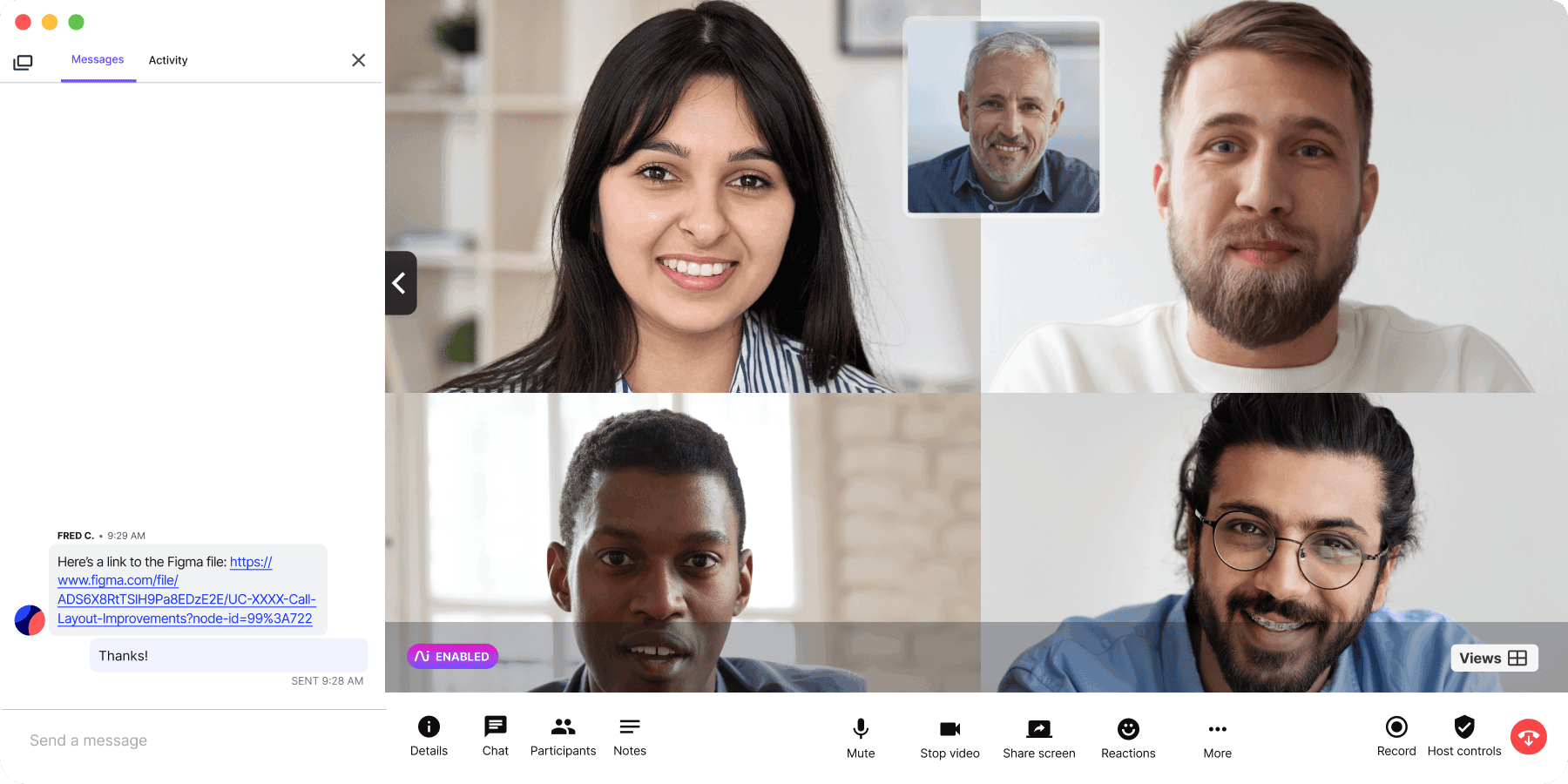
4. Be clear on who’s needed—and who’s not
Even though you should always keep meeting participants to as few people as possible, there will be times when it would actually be good to include extra people. But leave that choice up to them.
When building the guest list for the meeting, mark all non-essential meeting attendees as “optional” and include the agenda in the invite. That way, they can judge for themselves whether or not the meeting would be a good use of their time.
Run your meetings right with these meeting agenda templates
The agenda can determine the success of your meeting—even before the meeting actually begins.
By sending the agenda in advance, you’ll be able to tell others what to expect, alert people as to who is necessary (and isn’t), and help people prepare for the discussion. During the meeting, you can use the agenda to keep conversations focused and minimize distractions to protect people’s valuable time.
By using these key principles, you will make your agendas (and therefore your meetings) more effective.
Have better meetings with Dialpad
Sign up for Dialpad Ai Meetings' free plan to get free unlimited video meetings, or take a self-guided interactive tour of the app first!
Meeting agenda template FAQs
How do you write an agenda for a meeting?
You can create a meeting agenda in three simple steps:
Define the meeting goal or objective
Identify the topics of discussion (including subtopics if necessary)
Allocate time for each topic of discussion

